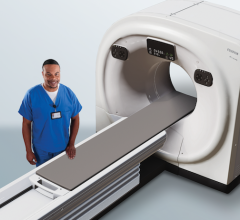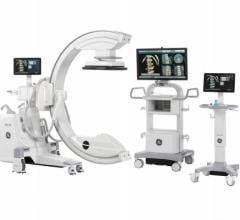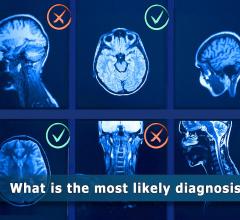
Medical Imaging Utilization Rates in Steady Decline
July 15, 2013 — Often-stated assumptions that medical imaging tests are one of the factors driving health care spending increases are being undermined by a new research study showing that physicians are ordering diagnostic imaging exams on an increasingly lower percentage of their interactions with Medicare patients.
The study, conducted by the Harvey L. Neiman Health Policy Institute and published in the July issue of the Journal of the American College of Radiology (JACR), utilizes a breadth of available evidence well beyond previous studies on imaging costs. Instead of looking solely at Medicare spending data, the Neiman Institute research uses Medical Expenditure Panel Survey (MEPS) data collected by the federal government that allows an analysis of physician decisions and actions during patient visits.
This data shows that the number of physician visits by patients 65 years of age or older resulting in an imaging exam is consistently trending downward, from 12.8 percent in 2003 to 10.6 percent in 2011. Similarly, Medicare spending per enrollee for imaging has declined from $418 in 2006 to $390 in 2011.
"This study should prompt a rethinking of the assumption that diagnostic imaging is a leading contributor to the nation's health spending challenges," said Danny Hughes, Ph.D., one of the authors of the imaging utilization study. "When you look at the available evidence in a truly patient-centered way, understanding what occurs on a patient visit to the doctor, then you see that physicians are calling for less, not more, imaging tests."
These findings are significant because the Deficit Reduction Act of 2005 already markedly reduced financial payments for diagnostic imaging, and further threats to imaging reimbursements are on the horizon in the form of budget sequestration and potential changes to the Medicare Strategic Growth Rate (SGR) formula. "A failure to understand the changes in utilization that may accompany these potential payment reductions could ultimately produce adverse effects on patient care regardless of whether the intended cost containment goals are realized," the study's authors wrote.
Hughes added, "Further study is needed in this area. We know from previous research that use of imaging leads to reduced rates of hospital readmissions, fewer unnecessary procedures, shorter hospital stays, longer life spans and lower mortality rates. As we look at imaging utilization and spending, we need to understand the whole picture of imaging's relationship to health care cost trends and quality of care."
The Harvey L. Neiman Health Policy Institute (HPI) studies the value and role of radiology in evolving health care delivery and payment systems, including quality based approaches to care and the impact of medical imaging on overall health care costs. HPI research provides a foundation for evidence-based imaging policy to improve patient care and bolster efficient, effective use of health care resources.


 November 14, 2024
November 14, 2024 








